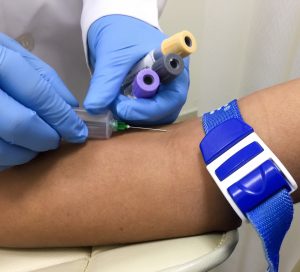We all know excess cholesterol can be bad – but is all cholesterol the same? What is LDL cholesterol? Learn about the “bad” type of cholesterol.
The body makes cholesterol on its own but it also takes it from certain food products. It’s a fat-like substance that can be found in your body’s cells.
You need some amount of cholesterol for your body to function properly. However, too much of it can increase the risk of coronary artery disease – but is all cholesterol the same?
LDL Cholesterol vs. HDL Cholesterol
These two types of lipoproteins are a combination of fat and protein and both serve different functions. The lipids (fat) need to be combined with proteins to be able to move through blood.
LDL (low-density lipoproteins) cholesterol is the bad type of cholesterol because it can cause buildup in the arteries. Conversely, HDL (high-density lipoproteins) is the good type of cholesterol as it helps remove excess cholesterol from the body.
LDL Cholesterol and Heart Health
Excess LDL cholesterol can lead to the formation of plaque, which is a buildup in the arteries, and cause atherosclerosis. Moreover, when the plaque builds up in the arteries of the heart, it can result in coronary artery disease.
The arteries will narrow and harden, causing poor circulation and blocking oxygen delivery. As a result, you may experience chest pain (angina) and even a heart attack.
 Testing for LDL Levels
Testing for LDL Levels
To measure your LDL cholesterol, all you need is a blood test. However, when and how often you get tested will vary by age, family history, and other risk factors.
Generally, people 19 years old and younger should get their first test between ages 9 to 11. One exception is children with a family history of heart disease, and they may be tested starting at age 2.
Additionally, children and young adults should get a test every 5 years.
In contrast, adults who are 20 years old and older will generally follow different guidelines. Women ages 55 to 65 and men ages 45 to 65 should get a test every 1 to 2 years.
Causes of High LDL Levels
There are multiple factors affecting your LDL cholesterol, including diets high in saturated fat and being overweight. Furthermore, they may also be affected by factors out of your control like genetics, age, and sex.
The optimal reading for LDL cholesterol is anything less than 100 mg/dL, while anything between 130 and 159 mg/dL is borderline high. A reading of 160 to 189 mg/dL is considered high, while a reading of 190 mg/dL or above is very high.
Lowering LDL Cholesterol
To successfully lower your cholesterol, you should start by eating a healthy diet. There are effective eating plans that specifically target cholesterol like the Therapeutic Lifestyle Changes diet and the DASH diet.
You can also manage your weight and lose extra pounds while also being physically active. In addition, you can try heart supplements like L-arginine Plus that will give your heart health the support it needs.
Its ingredients naturally increase nitric oxide, a substance in the body that improves overall blood flow. Give your cholesterol and blood pressure the boost it needs and combine L-arginine Plus with a healthy diet and lifestyle.

